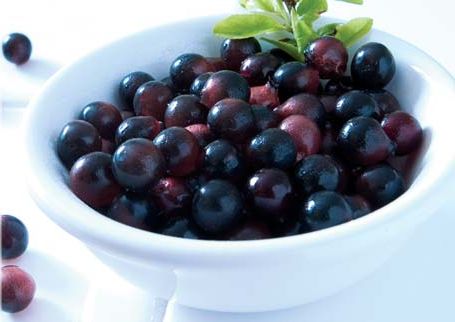 F A T
F A T
Fat
is very "calorically" dense, meaning that a gram of fat has about 9
calories while a gram of carbohydrate or protein has about 1/2 the
calories, or 4 grams, so you can eat twice as much carbohydrates or
protein for the same amount of calories of fat it means more room for
fruits, vegetables, grains, and beans. Reducing fat from your diet can
assist in weight loss or weight maintenance since you will be eating
fewer calories.
Reducing saturated fat can also help reduce your
risk of heart disease which will help lower blood cholesterol levels,
also it may help reduce your risk of cancer.
The Four Types Of Fat
I'm
not going to deep in this "you'll have a big headache if i say Cis and
trance", but in general here are four categories that all fats fall
into, Monounsaturated, Polyunsaturated, Saturated, and Trans Fats.
Hard!!
well i'll simple it to you.. If I say Trans Fat are the only of the
other types of fat that are man-made you will know that we should be far
far away from them.. So when you're out shopping, always avoid these:
- hydrogenated vegetable oil
- partially hydrogenated vegetable oil
- vegetable shortening
- margarine
So
mainly Monounsaturated and Polyunsaturated fats, keeping saturated fats
to less than 10% of total calories, & it's important to realize
that no fat source is purely saturated or unsaturated.
Foods like
nuts and avocados are predominantly monounsaturated fat sources, as are
olive and canola oils. Polyunsaturated fats are found in vegetable oils
like corn, soy, and sunflower, along with in fish and fish oil. Animal
products, including dairy, and the foods made from coconut (coconut
cream, coconut milk, coconut oil) or palm oil are the main sources of
saturated fat in the diet.
What to do
Here are some tips to help you:
1. Steam, boil, broil, or microwave vegetables, or stir-fry them in a small amount of vegetable oil.
2. Season vegetables with herbs and spices rather than sauces, butter, or margarine.
3. Try lemon juice or fat-free dressing on salad, or use a yogurt based dressing instead of mayonnaise or sour cream dressing.
4. To reduce saturated fat, use vegetable oil or tub margarine instead of butter or stick margarine when possible.
5.
Replace whole milk with skim or low-fat milk in puddings, soups, and
baked products. Substitute plain nonfat yogurt, blender-whipped cottage
cheese, low-fat sour cream, or buttermilk in recipes that call for sour
cream.
6. Choose lean cuts of meat, and trim any visible fat from
meat before and after cooking. Remove skin from poultry before or after
cooking. Monitor portion sizes.
7. Roast, bake, or broil meat, poultry, or fish, so that fat drains away as the food cooks.
8. Use a nonstick pan for cooking so added fat will be unnecessary, use a vegetable spray for frying.
9. Chill broths from meat or poultry until the fat becomes solid. Spoon off the fat before using the broth.
10. Eat a low-fat vegetarian main dish at least once a week.
11.
Start exercising. Jogging, running, swimming and cycling are excellent
ways to be fit, but if you find themboring, you can start a team sport
such as volleyball, basketball etc.
12. Drink a lot of water. It makes you feel full and forget about having extra meals and snacks
13.
Have healthy snacks among your main meals if you are still hungry
(fruit, vegs, low fat or skimmed diary products, with some protein"
13. Use reduced-fat or nonfat salad dressings.
14.
Use nonfat or lower fat spreads, such as jelly or jam, fruit spread,
apple butter, nonfat or reduced-calorie mayonnaise, nonfat margarine, or
mustard.
15. Use high-fat foods only sometimes; choose more low-fat and nonfat foods.
16.
To top baked potatoes, use plain nonfat or low-fat yogurt, nonfat or
reduced-fat sour cream, nonfat or low-fat cottage cheese, nonfat
margarine, nonfat hard cheese, salsa or vinegar.
17. Use a little
lemon juice, dried herbs, thinly sliced green onions, or a little salsa
as a nonfat topping for vegetables or salads.
18. Use small amounts
of high-fat toppings. For example, use only 1 tsp butter or mayonnaise; 1
tbsp sour cream; 1 tbsp regular salad dressing.
19. Switch to 1
percent or skim milk and other nonfat or lower fat dairy products
(low-fat or nonfat yogurt, nonfat or reduced-fat sour cream).
20. Cut
back on cheese by using small (1 oz) amounts on sandwiches and in
cooking or use lower fat and fat-free cheeses (part-skim mozzarella, 1
percent cottage cheese, or nonfat hard cheese).
21. Try small amounts
of these low-fat treats: fig bars, vanilla wafers, ginger snaps, angel
food cake, jelly beans,, gum drops, hard candy, puddings made with
low-fat (1 percent) skim milk, nonfat frozen yogurt with a fruit
topping, or fruit popsicles. Try pretzels or popcorn without butter or
oil for an unsweetened treat.
23. To top baked potatoes, use plain
nonfat or low-fat yogurt, nonfat or reduced-fat sour cream, nonfat or
low-fat cottage cheese, nonfat margarine, nonfat hard cheese, salsa or
vinegar.
Save french fries and other fried foods for special occasions; have a small serving; share with a friend.
24. Save high-fat desserts (ice cream, pastries) for special occasions; have small amounts; share a serving with a friend.
25. Use beans as a dip for vegetables or filling for sandwiches.
27. Serve soup made from beans or peas - minestrone, split- pea, black bean, or lentil (once a week or more).
28. Try black-eyed peas or black beans as a vegetable side dish with meat or fish.
29. Add beans to salads. Many salad bars feature kidney beans, three-bean salad, or chick peas.
30. Small amount of nuts are good choices for a health snacks.
 Hey everyone :)
Hey everyone :)





